Search results for: 'heavy ha'
- Related search terms
- Heavy
- heavy q
- heavy c
- HEAVY DUTY SK
- HEAVY DUTY SKI
-
 BABY DIAPER SEWING SYSTEM YEAR 1998TOTAL AUTOMATIC FOR PRE-FOLDED BABY DIAPERS PRE-FOLDED BABY DIAPERS AT RATES OF UP TO 35 PIECES PER MINUTE FEEDS FROM A HEAVY-DUTY CRADLE INFEED CAPABLE OF ROLL DIAMETERS OF 48” AND WEIGHTS OF 1,000LBS. BASIC SINGLE-STAGE FOLDERS CAN PRODUCE DIAPERS IN THE 2-3-2 STYLE, WITH AND WITHOUT SOAKER INSERTION THE OPTIONAL DUAL-STAGE FOLDERS CAN PRODUCE 2-3-2, 2-4-2, AND 2-5-2 STYLES, WITH AND WITHOUT SOAKER INSERTION THE FOLDER KITS ARE DELIVERED FOR TWO WIDTHS AS PER CUSTOMER SPECIFICATIONS ADDITIONAL FOLDERS CAN BE ADDED AN OPTIONAL PRINTER ATTACHMENT IS AVAILABLE FOR PRINTING A COMPANY LOGO OR TRADEMARK ON THE DIAPERS A STACKER IS ALSO AVAILABLE FOR STACKING THE FINISHED DIAPERS INTO BATCHES. THE BATCH SIZE CAN BE SELECTED ON A COUNTER SS-1BD SEWING SYSTEM THE SS-1BD SEWING SYSTEM DETAILED BELOW HAS BEEN DESIGNED ESPECIALLY FOR THE PRODUCTION OF FOLDED BABY DIAPERS WITH DOUBLE-STAGE FOLD. THE SYSTEM IS ALSO CAPABLE OF USING A STANDARD FELT-TYPE INSERT. THE STANDARD FEATURES ARE: POWERED INFEED CRADLE FOR ONE ROLL OF FABRIC WITH A MAXIMUM WIDTH OF 48”, DIAMETER OF 36”, AND WEIGHT OF 750LB (MASTER ROLL), AND ONE ROLL WITH MAXIMUM WIDTH OF 6”, DIAMETER OF 36”, AND WEIGHT OF 30LB. (SOAKER ROLL). COMPLETE WITH EDGE GUIDE LENGTH FOLDER TO CREATE OVERLAPPING, CONTINUOUS FOLD WITH POSSIBILITY OF INSERTING SOAKER. CAN BE ENTIRELY BYPASSED WHEN FOLDING IS NOT REQUIRED. FIRST SEWING STATION WITH TWO RIGHT HAND CHAIN STITCH SEWING HEADS (TYPE 401) TO SEW THE FOLD IN PLACE. DUAL STAGE PULL ROLLS FEED FROM ITEM 2 INTO A DANCER-BAR ACCUMULATOR MEASURING AND CUTOFF STATION (TRAVERSING ROTARY KNIFE) CUTS DIAPER TO LENGTH WITH +/- 1/8” REPEATABILITY. OUTFEED CONVEYOR WITH RIGHT-ANGLE TRANSFER STATION FOR TRANSFER OF CUT PIECES INTO SECOND SEWING SATION. SECOND SEWING STATION WITH LEFT AND RIGHT HAND SERGERS (TYPE 514) AND UPPER AND LOWER CONVEYOR BELTS TO CARRY THE DIAPER BETWEEN THE SERGERS. LEFT AND RIGHT HAND MECHANICAL CHAIN CUTTERS TO CUT THE THREAD CHAIN BETWEEN DIAPERS ELECTRONIC THREAD MOTION DETECTORS ON ALL SEWING HEADS. FOR SHIPPING: REQUIRES ONE CONTAINER -40 FEET TOTAL WEIGHT- 4,525 KGS Learn More
BABY DIAPER SEWING SYSTEM YEAR 1998TOTAL AUTOMATIC FOR PRE-FOLDED BABY DIAPERS PRE-FOLDED BABY DIAPERS AT RATES OF UP TO 35 PIECES PER MINUTE FEEDS FROM A HEAVY-DUTY CRADLE INFEED CAPABLE OF ROLL DIAMETERS OF 48” AND WEIGHTS OF 1,000LBS. BASIC SINGLE-STAGE FOLDERS CAN PRODUCE DIAPERS IN THE 2-3-2 STYLE, WITH AND WITHOUT SOAKER INSERTION THE OPTIONAL DUAL-STAGE FOLDERS CAN PRODUCE 2-3-2, 2-4-2, AND 2-5-2 STYLES, WITH AND WITHOUT SOAKER INSERTION THE FOLDER KITS ARE DELIVERED FOR TWO WIDTHS AS PER CUSTOMER SPECIFICATIONS ADDITIONAL FOLDERS CAN BE ADDED AN OPTIONAL PRINTER ATTACHMENT IS AVAILABLE FOR PRINTING A COMPANY LOGO OR TRADEMARK ON THE DIAPERS A STACKER IS ALSO AVAILABLE FOR STACKING THE FINISHED DIAPERS INTO BATCHES. THE BATCH SIZE CAN BE SELECTED ON A COUNTER SS-1BD SEWING SYSTEM THE SS-1BD SEWING SYSTEM DETAILED BELOW HAS BEEN DESIGNED ESPECIALLY FOR THE PRODUCTION OF FOLDED BABY DIAPERS WITH DOUBLE-STAGE FOLD. THE SYSTEM IS ALSO CAPABLE OF USING A STANDARD FELT-TYPE INSERT. THE STANDARD FEATURES ARE: POWERED INFEED CRADLE FOR ONE ROLL OF FABRIC WITH A MAXIMUM WIDTH OF 48”, DIAMETER OF 36”, AND WEIGHT OF 750LB (MASTER ROLL), AND ONE ROLL WITH MAXIMUM WIDTH OF 6”, DIAMETER OF 36”, AND WEIGHT OF 30LB. (SOAKER ROLL). COMPLETE WITH EDGE GUIDE LENGTH FOLDER TO CREATE OVERLAPPING, CONTINUOUS FOLD WITH POSSIBILITY OF INSERTING SOAKER. CAN BE ENTIRELY BYPASSED WHEN FOLDING IS NOT REQUIRED. FIRST SEWING STATION WITH TWO RIGHT HAND CHAIN STITCH SEWING HEADS (TYPE 401) TO SEW THE FOLD IN PLACE. DUAL STAGE PULL ROLLS FEED FROM ITEM 2 INTO A DANCER-BAR ACCUMULATOR MEASURING AND CUTOFF STATION (TRAVERSING ROTARY KNIFE) CUTS DIAPER TO LENGTH WITH +/- 1/8” REPEATABILITY. OUTFEED CONVEYOR WITH RIGHT-ANGLE TRANSFER STATION FOR TRANSFER OF CUT PIECES INTO SECOND SEWING SATION. SECOND SEWING STATION WITH LEFT AND RIGHT HAND SERGERS (TYPE 514) AND UPPER AND LOWER CONVEYOR BELTS TO CARRY THE DIAPER BETWEEN THE SERGERS. LEFT AND RIGHT HAND MECHANICAL CHAIN CUTTERS TO CUT THE THREAD CHAIN BETWEEN DIAPERS ELECTRONIC THREAD MOTION DETECTORS ON ALL SEWING HEADS. FOR SHIPPING: REQUIRES ONE CONTAINER -40 FEET TOTAL WEIGHT- 4,525 KGS Learn More -
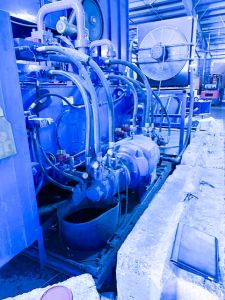 TT-8651 HARRIS CENTURION 150 TWO RAM BALER AND INFEED CONVEYOR, YEAR 2018TT-8651 HARRIS CENTURION 150 TWO RAM BALER AND INFEED CONVEYOR, YEAR 2018 QUANTITY: 1 Learn More
TT-8651 HARRIS CENTURION 150 TWO RAM BALER AND INFEED CONVEYOR, YEAR 2018TT-8651 HARRIS CENTURION 150 TWO RAM BALER AND INFEED CONVEYOR, YEAR 2018 QUANTITY: 1 Learn More -
 TT-5256 SULZER 213 ES 105 E10 D1, CAMTT-5256 SULZER 213 ES 105 E10 D1, CAM QUANTITY: 12 Learn More
TT-5256 SULZER 213 ES 105 E10 D1, CAMTT-5256 SULZER 213 ES 105 E10 D1, CAM QUANTITY: 12 Learn More -
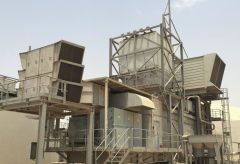 TT-4095 SIEMENS SGT 600 GAS TURBINE PLANT, 24.5 MW, 50 Hz, YEAR 2012 TO 2017TT-4095 SIEMENS SGT 600 GAS TURBINE PLANT, 24.5 MW, 50 Hz, YEAR 2012 TO 2017 MODEL: SGT 600 RATED CAPACITY: 24.5 MW SPEED: 1500 RPM GENERATOR OUTPUT: 11 KV FREQUENCY: 50 Hz AVAILABLE IN SINGLE CYCLE GT1 2012 GT2 2012 GT3 2107 GT4 2017 QUANTITY: 4 UNITS Learn More
TT-4095 SIEMENS SGT 600 GAS TURBINE PLANT, 24.5 MW, 50 Hz, YEAR 2012 TO 2017TT-4095 SIEMENS SGT 600 GAS TURBINE PLANT, 24.5 MW, 50 Hz, YEAR 2012 TO 2017 MODEL: SGT 600 RATED CAPACITY: 24.5 MW SPEED: 1500 RPM GENERATOR OUTPUT: 11 KV FREQUENCY: 50 Hz AVAILABLE IN SINGLE CYCLE GT1 2012 GT2 2012 GT3 2107 GT4 2017 QUANTITY: 4 UNITS Learn More -
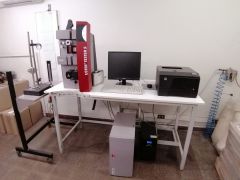 TT-3723 USTER TESTER 5 MODEL OH-MS120-KB, YEAR 2015TT-3723 USTER TESTER 5 MODEL OH-MS120-KB, YEAR 2015 USTER TESTER 5 MODEL OH-MS120-KB UT5 S400 SEMI-AUTOMATIC EVENNESS TESTER YEAR 2015 QUANTITY: 1 Learn More
TT-3723 USTER TESTER 5 MODEL OH-MS120-KB, YEAR 2015TT-3723 USTER TESTER 5 MODEL OH-MS120-KB, YEAR 2015 USTER TESTER 5 MODEL OH-MS120-KB UT5 S400 SEMI-AUTOMATIC EVENNESS TESTER YEAR 2015 QUANTITY: 1 Learn More -
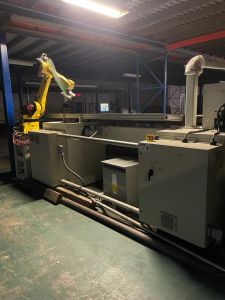 J-4941 AUTOMATED INDUSTRIAL MACHINERY AFM 2 DG WIRE BENDING MACHINEJ-4941 AUTOMATED INDUSTRIAL MACHINERY AFM 2 DG WIRE BENDING MACHINE MAKE: AIM (AUTOMATED INDUSTRIAL MACHINERY) MODEL: AFM 2 DG (ACCUFORM MODULAR 2DX) TILTING TABLE SINGLE STAGE BENDING HEAD OPTIONS: P8 F1 WE SERIAL NUMBER: C 3 F0701 2009 WIRING DIAGRAM: AFM 2D6 – P8WEF1 – 490 – V8 – 3 VOLTAGE: 460 VOLTS FREQUENCY: 50 / 60 Hz FULL LOAD: 40 KVA LARGEST LOAD: 9 KVA DIMENSIONS OF THE STAINLESS STEEL TABLE: WIDTH 15 FEET 1 INCH x LENGTH 10 FEET 5 inches LOWER STAINLESS STEEL TABLE EXPENSION DIMENSIONS: WIDTH 8 FEET x LENGTH 37.5 INCHES QUANTITY: 1 Learn More
J-4941 AUTOMATED INDUSTRIAL MACHINERY AFM 2 DG WIRE BENDING MACHINEJ-4941 AUTOMATED INDUSTRIAL MACHINERY AFM 2 DG WIRE BENDING MACHINE MAKE: AIM (AUTOMATED INDUSTRIAL MACHINERY) MODEL: AFM 2 DG (ACCUFORM MODULAR 2DX) TILTING TABLE SINGLE STAGE BENDING HEAD OPTIONS: P8 F1 WE SERIAL NUMBER: C 3 F0701 2009 WIRING DIAGRAM: AFM 2D6 – P8WEF1 – 490 – V8 – 3 VOLTAGE: 460 VOLTS FREQUENCY: 50 / 60 Hz FULL LOAD: 40 KVA LARGEST LOAD: 9 KVA DIMENSIONS OF THE STAINLESS STEEL TABLE: WIDTH 15 FEET 1 INCH x LENGTH 10 FEET 5 inches LOWER STAINLESS STEEL TABLE EXPENSION DIMENSIONS: WIDTH 8 FEET x LENGTH 37.5 INCHES QUANTITY: 1 Learn More -
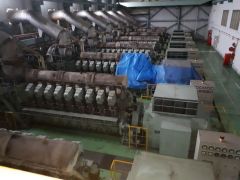 TT-1882 HFO MITSUBISHI 18KU30A POWER PLANT, 45MW 50Hz, 5.6MW, YEAR 1998TT-1882 HFO MITSUBISHI 18KU30A POWER PLANT, 45MW 50Hz, 5.6MW, YEAR 1998 MAIN SPECIFICATIONS: ENGINE MODEL: 18KU30A BRAND: MITSUBISHI CONTINUOUS OUTPUT: 5,600KWE X 750 RPM FREQUENCY & VOLTAGE: 50HZ & 11,000V YEAR OF PRODUCTION: 1998 FUEL OIL: HFO / DO PLANT AUXILIARY EQUIPMENT: 1 SET RUNNING HOURS: ABT. 21,000 HOURS QUANTITY: 8 Learn More
TT-1882 HFO MITSUBISHI 18KU30A POWER PLANT, 45MW 50Hz, 5.6MW, YEAR 1998TT-1882 HFO MITSUBISHI 18KU30A POWER PLANT, 45MW 50Hz, 5.6MW, YEAR 1998 MAIN SPECIFICATIONS: ENGINE MODEL: 18KU30A BRAND: MITSUBISHI CONTINUOUS OUTPUT: 5,600KWE X 750 RPM FREQUENCY & VOLTAGE: 50HZ & 11,000V YEAR OF PRODUCTION: 1998 FUEL OIL: HFO / DO PLANT AUXILIARY EQUIPMENT: 1 SET RUNNING HOURS: ABT. 21,000 HOURS QUANTITY: 8 Learn More -
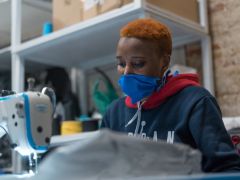 D-2388 What’s the Best Material for a Mask?
D-2388 What’s the Best Material for a Mask?Federal health officials have now recommended that we cover our faces with fabric during the coronavirus pandemic. But what material offers the most protection?
The Centers for Disease Control and Prevention has posted a no-sew mask pattern using a bandanna and a coffee filter as well as a video on making masks using rubber bands and folded fabrics found at home.
While a simple face covering can reduce the spread of coronavirus by blocking outgoing germs from coughs or sneezes of an infected person, experts say there is more variation in how much homemade masks might protect the wearer from incoming germs, depending on the fit and quality of the material used.
Scientists around the country have taken it upon themselves to identify everyday materials that do a better job of filtering microscopic particles. In recent tests, HEPA furnace filters scored well, as did vacuum cleaner bags, layers of 600-count pillowcases and fabric similar to flannel pajamas. Stacked coffee filters had medium scores. Scarves and bandanna material had the lowest scores, but still captured a small percentage of particles.
If you don’t have any of the materials that were tested, a simple light test can help you decide whether a fabric is a good candidate for a mask.
“Hold it up to a bright light,” said Dr. Scott Segal, chairman of anesthesiology at Wake Forest Baptist Health who recently studied homemade masks. “If light passes really easily through the fibers and you can almost see the fibers, it’s not a good fabric. If it’s a denser weave of thicker material and light doesn’t pass through it as much, that’s the material you want to use.”
Researchers say it’s important to remember that lab studies are conducted under perfect conditions with no leaks or gaps in the mask, but the test methods give us a way to compare materials. And while the degree of filtration for some homemade masks seems low, most of us — who are staying home and practicing social distancing in public — don’t need the high level of protection required for medical workers. More important, any face covering is better than none, especially if worn by a person who has the virus but doesn’t know it.
The biggest challenge of choosing a homemade mask material is to find a fabric that is dense enough to capture viral particles, but breathable enough that we can actually wear it. Some items being touted online promise high filtration scores, but the material would be unwearable.
Dressing Up for Work … at Home
Yang Wang, an assistant professor of environmental engineering at Missouri University of Science and Technology, worked with his graduate students to study various combinations of layered materials — including both air filters and fabric. “You need something that is efficient for removing particles, but you also need to breathe,” said Dr. Wang, who last fall won an international award for aerosol research.To test everyday materials, scientists are using methods similar to those used to test medical masks, which everybody agrees should be saved for medical workers who are exposed to high doses of virus from seeing infected patients. The best medical mask — called the N95 respirator — filters out at least 95 percent of particles as small as 0.3 microns. By comparison, a typical surgical mask — made using a rectangular piece of pleated fabric with elastic ear loops — has a filtration efficiency ranging from 60 to 80 percent.
Dr. Wang’s group tested two types of air filters. An allergy-reduction HVAC filter worked the best, capturing 89 percent of particles with one layer and 94 percent with two layers. A furnace filter captured 75 percent with two layers, but required six layers to achieve 95 percent. To find a filter similar to those tested, look for a minimum efficiency reporting value (MERV) rating of 12 or higher or a microparticle performance rating of 1900 or higher.
The problem with air filters is that they potentially could shed small fibers that would be risky to inhale. So if you want to use a filter, you need to sandwich the filter between two layers of cotton fabric. Dr. Wang said one of his grad students made his own mask by following the instructions in the C.D.C. video, but adding several layers of filter material inside a bandanna.
Dr. Wang’s group also found that when certain common fabrics were used, two layers offered far less protection than four layers. A 600 thread count pillow case captured just 22 percent of particles when doubled, but four layers captured nearly 60 percent. A thick woolen yarn scarf filtered 21 percent of particles in two layers, and 48.8 percent in four layers. A 100 percent cotton bandanna did the worst, capturing only 18.2 percent when doubled, and just 19.5 percent in four layers.
The group also tested Brew Rite and Natural Brew basket-style coffee filters, which, when stacked in three layers, showed 40 to 50 percent filtration efficiency — but they were less breathable than other options.
If you are lucky enough to know a quilter, ask them to make you a mask. Tests performed at the Wake Forest Institute for Regenerative Medicine in Winston-Salem, N.C., showed good results for homemade masks using quilting fabric. Dr. Segal, of Wake Forest Baptist Health, who led the study, noted that quilters tend to use high-quality, high-thread count cotton. The best homemade masks in his study were as good as surgical masks or slightly better, testing in the range of 70 to 79 percent filtration. Homemade masks that used flimsier fabric tested as low as 1 percent filtration, Dr. Segal said.
The best-performing designs were a mask constructed of two layers of high-quality, heavyweight “quilter’s cotton,” a two-layer mask made with thick batik fabric, and a double-layer mask with an inner layer of flannel and outer layer of cotton.
Bonnie Browning, executive show director for the American Quilter’s Society, said that quilters prefer tightly woven cottons and batik fabrics that stand up over time. Ms. Browning said most sewing machines can handle only two layers of fabric when making a pleated mask, but someone who wanted four layers of protection could wear two masks at a time.
Ms. Browning said she recently reached out to quilters on Facebook and heard from 71 people who have made a combined total of nearly 15,000 masks. “We quilters are very much in the thick of what’s going on with this,” said Ms. Browning, who lives in Paducah, Ky. “One thing most of us have is a stash of fabric.”
People who don’t sew could try a folded origami mask, created by Jiangmei Wu, assistant professor of interior design at Indiana University. Ms. Wu, who is known for her breathtaking folded artwork, said she began designing a folded mask out of a medical and building material called Tyvek, as well as vacuum bags, after her brother in Hong Kong, where mask wearing is common, suggested it. (DuPont, the maker of Tyvek, said in a statement that Tyvek is intended for medical apparel, not masks.) The folded mask pattern is free online, as is a video demonstrating the folding process. In tests at Missouri University and University of Virginia, scientists found that vacuum bags removed between 60 percent and 87 percent of particles. But some brands of vacuum bags may contain fiberglass or are harder to breathe through than other materials, and shouldn’t be used. Ms. Wu used a bag by EnviroCare Technologies, which has said it does not use fiberglass in its paper and synthetic cloth bags.
“I wanted to create an alternative for people who don’t sew,” said Ms. Wu, who said she is talking to various groups to find other materials that will be effective in a folded mask. “Given the shortage of all kinds of materials, even vacuum bags might run out.”
The scientists who conducted the tests used a standard of 0.3 microns because that is the measure used by the National Institute for Occupational Safety and Health for medical masks.
Linsey Marr, a Virginia Tech aerosol scientist and an expert in the transmission of viruses, said the certification method for respirators and HEPA filters focuses on 0.3 microns because particles around that size are the hardest to catch. While it seems counterintuitive, particles smaller than 0.1 microns are actually easier to catch because they have a lot of random motion that makes them bump into the filter fibers, she said.
“Even though coronavirus is around 0.1 microns, it floats around in a wide range of sizes, from around 0.2 to several hundred microns, because people shed the virus in respiratory fluid droplets that also contain lots of salts and proteins and other things,” said Dr. Marr. “Even if the water in the droplets fully evaporates, there’s still a lot of salt and proteins and other gunk that stays behind as solid or gel-like material. I think 0.3 microns is still useful for guidance because the minimum filtration efficiency will be somewhere around this size, and it’s what NIOSH uses.”
Learn More -
 M-5393 TUFTCO COATING LINE WITH FOAM MACHINE AND SLITTING OPERATIONREFERENCE NUMBER: M-5393 (2206YBJL1UM) L TUFTCO COATING LINE WITH FOAM MACHINE AND SLITTING OPERATION TUFTO COATING LINE FOR EMBOSSED UNITARY BACKED RUGS USING WASHABLE LATEX FOR EMBOSSED WASHABLE RUGS – SET UP FOR 12’ WIDTH AND INCLUDES THE FOLLOWING: TISI MODEL 38500 BUTT SEAMER WITH TRIMMER ON RAIL ENTRANCE J-BOX VERTICAL KEYON PIN TENTER DIRECT COAT APPLICATOR, ROLL OVER ROLL WITH TRAVERSING SYSTEM DAY TANK TO FEED LATEX TO FROTH MACHINE EASE TYPE FROTH MACHINE PRE-STEAMER BANK OF ELECTRIC INFRAREDS TWO BASKET-WEAVE EMBOSSING ROLLERS FOR 12’ WIDTHS FOUR MODULE NATURAL GAS HEATED TUFTCO CURING OVEN COOL OUT SECTION SLITTING SECTION WITH EIGHT SLITTING HEADS AND A CAMERA GUIDING SYSTEM 10 LOOP ACCUMULATOR ROLLUP ELECTRICAL CONTROL SYSTEM BY TUFTCO SPEED RANGE: LINE SPEED FOR COATING 50 OUNCE/SQUARE YARD FACE WEIGHT WITH 24 OZ/SQUARE YARD OF EMBOSSIBLE LATEX IS 35FPM, LINE SPEED FOR COATING 30 OZ/SQUARE YARD FACE WEIGHT WITH 20 OZ/SQUARE YARD OF EMBOSSIBLE LATEX IS 45 FPM. TOILET SEAT CONVERS ARE COATED WITH APPROXIMATELY 7 OZ/SQUARE YARD AT 70 FPM. NOTE THE MAXIMUM MECHANICAL SPEED OF THE COATING LINE IS 70 FPM. QUANTITY AVAILABLE: 1 Learn More
M-5393 TUFTCO COATING LINE WITH FOAM MACHINE AND SLITTING OPERATIONREFERENCE NUMBER: M-5393 (2206YBJL1UM) L TUFTCO COATING LINE WITH FOAM MACHINE AND SLITTING OPERATION TUFTO COATING LINE FOR EMBOSSED UNITARY BACKED RUGS USING WASHABLE LATEX FOR EMBOSSED WASHABLE RUGS – SET UP FOR 12’ WIDTH AND INCLUDES THE FOLLOWING: TISI MODEL 38500 BUTT SEAMER WITH TRIMMER ON RAIL ENTRANCE J-BOX VERTICAL KEYON PIN TENTER DIRECT COAT APPLICATOR, ROLL OVER ROLL WITH TRAVERSING SYSTEM DAY TANK TO FEED LATEX TO FROTH MACHINE EASE TYPE FROTH MACHINE PRE-STEAMER BANK OF ELECTRIC INFRAREDS TWO BASKET-WEAVE EMBOSSING ROLLERS FOR 12’ WIDTHS FOUR MODULE NATURAL GAS HEATED TUFTCO CURING OVEN COOL OUT SECTION SLITTING SECTION WITH EIGHT SLITTING HEADS AND A CAMERA GUIDING SYSTEM 10 LOOP ACCUMULATOR ROLLUP ELECTRICAL CONTROL SYSTEM BY TUFTCO SPEED RANGE: LINE SPEED FOR COATING 50 OUNCE/SQUARE YARD FACE WEIGHT WITH 24 OZ/SQUARE YARD OF EMBOSSIBLE LATEX IS 35FPM, LINE SPEED FOR COATING 30 OZ/SQUARE YARD FACE WEIGHT WITH 20 OZ/SQUARE YARD OF EMBOSSIBLE LATEX IS 45 FPM. TOILET SEAT CONVERS ARE COATED WITH APPROXIMATELY 7 OZ/SQUARE YARD AT 70 FPM. NOTE THE MAXIMUM MECHANICAL SPEED OF THE COATING LINE IS 70 FPM. QUANTITY AVAILABLE: 1 Learn More -
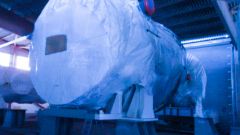 TT-8656 SIEMENS SGT5 4000 F GAS TURBINE & GENERATOR – NEW, 54 MW, YEAR 2016, 50/60 HzTT-8656 SIEMENS SGT5 4000 F GAS TURBINE & GENERATOR – NEW, 54 MW, YEAR 2016, 50/60 Hz 1. NEW AND UNUSED SIEMENS GAS TURBINE & GENERATOR 2. HEAVY DUTY, SINGLE CASING, AXIAL FLOW DESIGN AND DUAL FUEL GAS TURBINE. 3. MODEL: SGT54000F 4. BRAND: SIEMENS AG 5. 54 MW 6. YEAR OF MANUFACTURE: 2016 7. FREQUENCY: 50 Hz 8. FUEL: NATURAL GAS (NG) AND DIESEL OIL (DO) 9. GUARANTEED PERFORMANCE: 10. GROSS POWER OUTPUT [MW]: 298,2 (NG) – 301 (DO). 11. GROSS HEAT RATE [KJ/KWH]: 8979,3 (NG) – 9538,5 (DO). 12. GENERATOR: SGEN51200 A. 13. INCLUDES: BYPASS STACK AND DIVERTER DAMPER. 14. DELIVERY: IMMEDIATELY. BUYER IS RESPONSIBLE FOR LOADING, FREIGHT AND LOGISTICS FROM ACTUAL LOCATION TO FINAL DESTINATION. 15. DETAILED DESCRIPTION: GAS TURBINE (GT) 16. IT WORKS ON 50 Hz BUT COULD BE CONVERTED, WITH ADDITIONAL EQUIPMENT FOR 60 Hz (EXTRA COSTS). QUANTITY: 1 Learn More
TT-8656 SIEMENS SGT5 4000 F GAS TURBINE & GENERATOR – NEW, 54 MW, YEAR 2016, 50/60 HzTT-8656 SIEMENS SGT5 4000 F GAS TURBINE & GENERATOR – NEW, 54 MW, YEAR 2016, 50/60 Hz 1. NEW AND UNUSED SIEMENS GAS TURBINE & GENERATOR 2. HEAVY DUTY, SINGLE CASING, AXIAL FLOW DESIGN AND DUAL FUEL GAS TURBINE. 3. MODEL: SGT54000F 4. BRAND: SIEMENS AG 5. 54 MW 6. YEAR OF MANUFACTURE: 2016 7. FREQUENCY: 50 Hz 8. FUEL: NATURAL GAS (NG) AND DIESEL OIL (DO) 9. GUARANTEED PERFORMANCE: 10. GROSS POWER OUTPUT [MW]: 298,2 (NG) – 301 (DO). 11. GROSS HEAT RATE [KJ/KWH]: 8979,3 (NG) – 9538,5 (DO). 12. GENERATOR: SGEN51200 A. 13. INCLUDES: BYPASS STACK AND DIVERTER DAMPER. 14. DELIVERY: IMMEDIATELY. BUYER IS RESPONSIBLE FOR LOADING, FREIGHT AND LOGISTICS FROM ACTUAL LOCATION TO FINAL DESTINATION. 15. DETAILED DESCRIPTION: GAS TURBINE (GT) 16. IT WORKS ON 50 Hz BUT COULD BE CONVERTED, WITH ADDITIONAL EQUIPMENT FOR 60 Hz (EXTRA COSTS). QUANTITY: 1 Learn More
